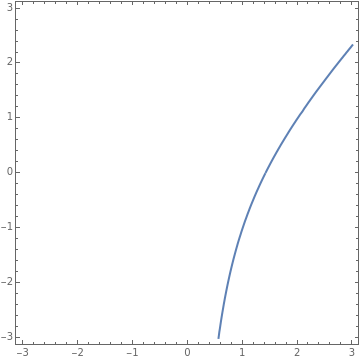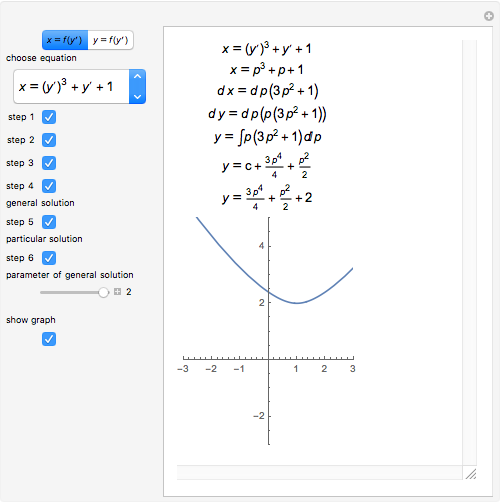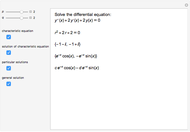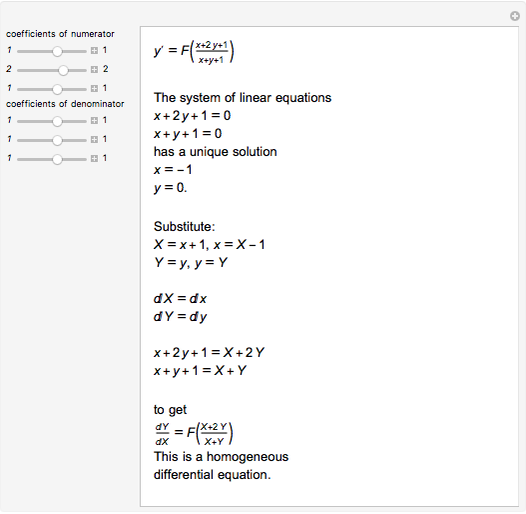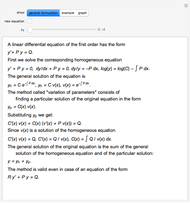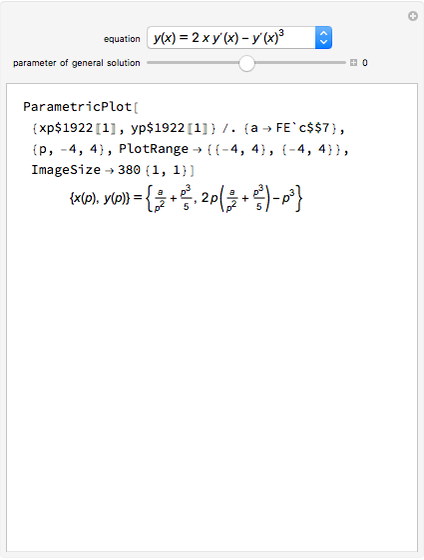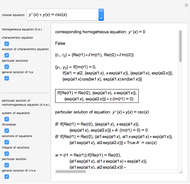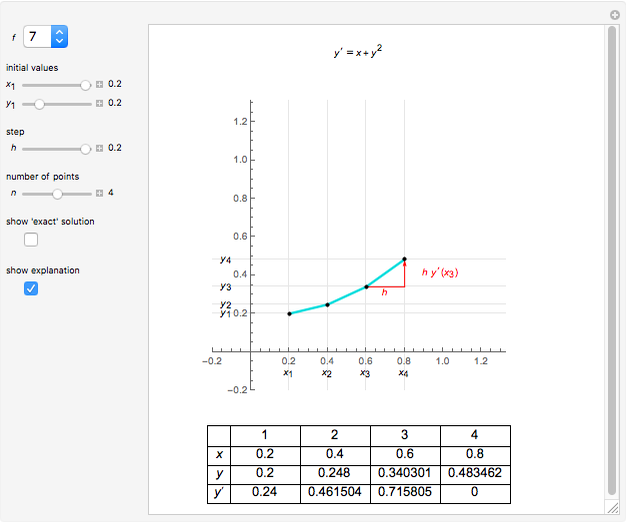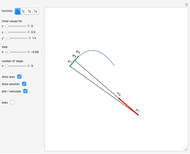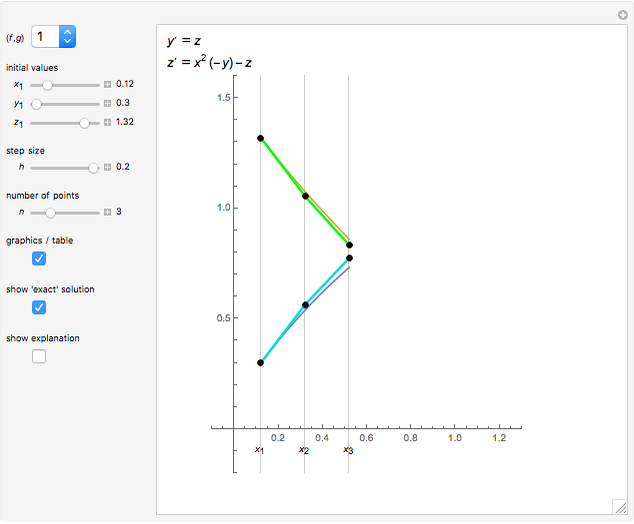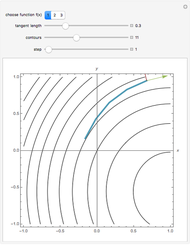Some Homogeneous Ordinary Differential Equations

Requires a Wolfram Notebook System
Interact on desktop, mobile and cloud with the free Wolfram Player or other Wolfram Language products.
This Demonstration shows a procedure for solving an ordinary differential equation of the form  . The first step is to introduce a new variable
. The first step is to introduce a new variable  ,
,  . Differentiating the last equation, we get
. Differentiating the last equation, we get  . By substitution, we get
. By substitution, we get  ,
,  . In the last equation, we separate variables to get
. In the last equation, we separate variables to get  . Integration of both parts yields
. Integration of both parts yields  . From the last equation, we get a general solution of the form
. From the last equation, we get a general solution of the form  where
where  .
.
Contributed by: Izidor Hafner (April 2014)
Open content licensed under CC BY-NC-SA
Snapshots
Details
The equation  is called homogeneous if
is called homogeneous if  and
and  are homogeneous functions of
are homogeneous functions of  of the same order. The equation can be reduced to the form
of the same order. The equation can be reduced to the form  . A function
. A function  is called homogeneous of order
is called homogeneous of order  if
if  . An example:
. An example:  and
and  are homogeneous of order 2, and
are homogeneous of order 2, and  is homogeneous of order 0.
is homogeneous of order 0.
The differential equation  is not homogeneous in the usual sense of a linear differential equation having a right-hand side equal to zero, like
is not homogeneous in the usual sense of a linear differential equation having a right-hand side equal to zero, like  .
.
Reference
[1] V. I. Smirnoff, Lectures in Higher Mathematics (in Russian), Vol. 2, Moscow: Nauka, 1967 pp. 19–21.
Permanent Citation
